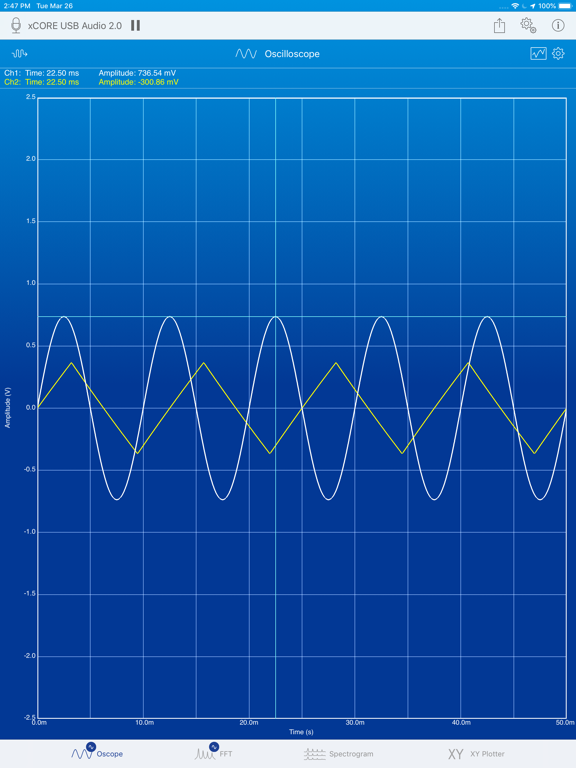

- #Iphone signalscope serial number
- #Iphone signalscope install
- #Iphone signalscope pro
- #Iphone signalscope software
The DC correction factor can be used to calibrate the input channel for accurate DC level measurements. Within this submenu, you can choose to enable a DC-blocking filter (cutoff < 0.5 Hz) or enter a DC correction factor. The Input Channels menu in SignalScope X now offers a DC Correction submenu for each input channel. Expert Sleepers ES-9 DC-coupled audio interface in a 4ms Pod34X enclosure In the case of the Expert Sleepers ES-9, which we tested, DC-coupling was not enabled by default.
#Iphone signalscope software
All devices offer configuration software with which DC-coupling can be turned on or off. The ES-8 and ES-9 rely on the standard USB Audio Class drivers, so they can be used with your iPhone or iPad, as well as your Mac. At the present time, we are aware of 3 audio interfaces that do: the Expert Sleepers ES-8 and ES-9 Eurorack modules and Antelope Audio’s Orion Studio Synergy Core. The number of audio interfaces with DC-coupled output channels seems to have been growing for some time, although very few interfaces offer DC-coupled inputs. It's $95.With the release of version 11.4 of SignalScope X, you can more easily analyze and generate signals with DC content, as long as you have compatible hardware with DC-coupled input and/or output channels. And if it goes missing, you won't be crying over a missing $2,000 mic. Certainly better than the built in mic on the iPhone or iPad. If you choose not to do so now, you can load the data at any time in the i/o Device configuration screen."Īs Mike mentions, it's an acceptable mic.
#Iphone signalscope serial number
The serial number is printed beneath the bar code on the UMIK-1 and should have 7 digits. If you would like to download factory calibration data for your UMIK-1 microphone, please enter its serial number in the text box. My USB to 30 pin and USB to lighting adapters finally arrived, and sure enough, a window pops up on both my iPad and iPhone with: This mic came to my attention a month or so ago, when the iOS app* I use as a basic RTA in tech, stated in it's recent update, that it could import this mics calibration file. Fortunately, this fixed the issue - and kudos to SMAART for allowing the Aggregate choice as input. Internal D/A output by engaging “drift correction”. Via the “Audio MIDI” utility in OSX (the preferences audio pane won’t do You can only access this functionality when you call up the Aggregate Second thoughts about my years of Avid-bashing. That you can access a hidden layer that provides “drift” correction for What I remembered about the aggregate device is

Multiple interfaces into a single virtual device, which is required for ProTools 90’s-vintage input limitations.
#Iphone signalscope pro
“ Pro Tools Aggregate I/O” shows up in your control panel.
#Iphone signalscope install
until now.Įvery time you install ProTools, a rather obscure audio engine choice called Sources without word clock? But then I remember a stupid Avid product that So… how in the world can you sync two digital Simultaneous interfaces as you can plug into the computer – but (rightfully so) it has no method of sample-rate or sync correction. Uncorrelated (no digital sync) digital input devices connected to the same Was just a presumptive idiot There is an inherent problem having two Then came the third bad thought – which was that I


 0 kommentar(er)
0 kommentar(er)
